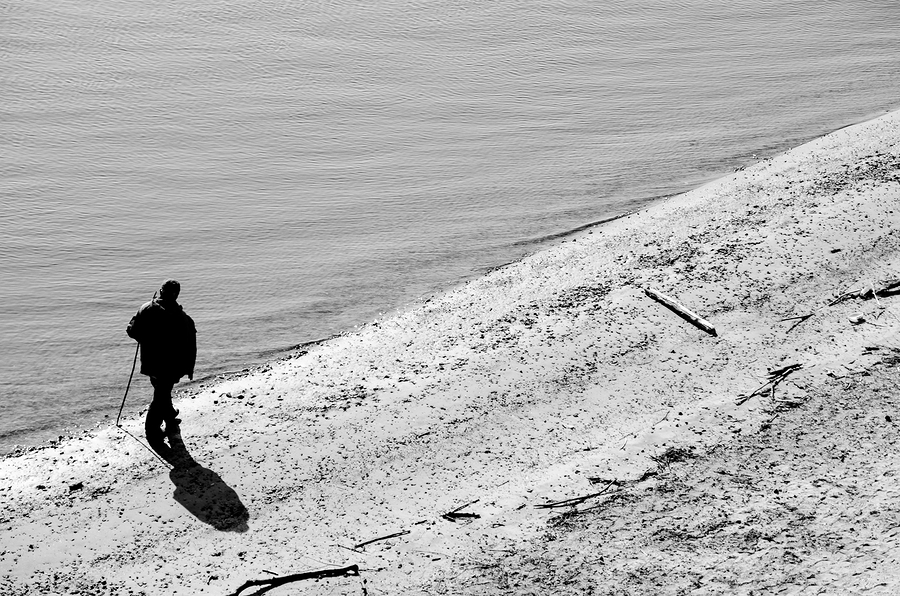I’ve always been a walker. Besides the obvious health benefits, walking eliminates distractions and helps me focus on big-picture thinking. Walking is also my transportation alternative.
Maybe it goes back to my days of hitchhiking across the country, or walking in the jungles of Nicaragua with “jugglers for peace”, or trekking the high Andes of Peru with Don Américo, or night walks in Nashville with my friend Joel Solomon. Joel and I walked the streets and alleys, exploring the neighborhoods and seeing the city from a different perspective at night. Strolling the quiet walkways gave us time for conversation, spurred new ideas and encouraged creative thinking about our personal development and how we could contribute to the health of our city.
During these night walks, we formulated the impact we wanted to make on the real estate industry. I decided I would help revitalize Nashville’s core neighborhoods, which had been victimized by suburban flight. I would work with residents and city leaders to make these neighborhoods attractive to homeowners and businesses. This would bring people back to live in the core and help build a healthy city.
While visiting European and South American cities with my wife, Sherry, we notice walking is encouraged as a transportation alternative, and parks, greenways and public squares are part of the city fabric. The network of green space and sidewalks promotes a healthy lifestyle. Many U.S. cities are recognizing this health benefit as their urban areas become popular places to live again. Nashville is among those cities.
As living units became available in Nashville’s core, residents began moving downtown for the opportunity to live more efficiently and sustainably. The demand increased for access to open space, good public transportation and walkability. As good stewards of the city, it is our responsibility to provide these.
Fueled my passion for developing our city’s greenway system, I gave my customers who bought a downtown condo a one-year membership to Greenways for Nashville as a closing gift. My buyers appreciated the gift. It encouraged them to get out and explore the city by foot and reap the health benefits. Before long, I had given more than a thousand memberships and was named “volunteer of the year” for my support of Greenways. I was invited to join the board and four years later I became board president of Greenways for Nashville, a position I held for six-and-a-half years.
I engaged other community builders to support and advocate for a robust greenways system that is providing vital connections between neighborhoods, schools, parks and businesses in our ever-growing city. Today, we have more than 87 miles of greenways in Nashville/Davidson County and we are working to connect a 25-mile greenway loop circling the city’s core. I’m proud to say that we are 90 percent toward our goal of a greenway within two miles of every Nashville neighborhood. The city’s Plan to Play calls for another 51 miles to be added during the next 10 years and many of those will be part of our urban greenway system.
While I’ve been a life-long walker, I haven’t always known the sustainable and economic benefits of walking. Through my involvement with Urban Land Institute and Nashville Civic Design Center, I have learned that people who live in walkable communities drive 20-40 percent less, lowering emissions. Real estate developer Christopher Leinberger of LOCUS says walkability is also good for the economy. He points out that every point over seventy on Walk Score results in increased rents of 90 cents per square foot for commercial property and $20 per square foot for residential property values.
Walk Score measures the walkability of a location based on its distance from amenities, density of population, block length and pedestrian friendliness. The annual ranking identifies the most walkable U.S. cities with populations of more than 300,000. While New York City consistently holds the No. 1 spot, my hope is that Nashville will make it into the top rankings some day.
Studies also show that walking is a business issue. I believe it is important for businesses to encourage employees to walk more. In January 2018, Village real estate brokerage launched a Step Challenge for agents and staff. We all use the Activity Club app, which syncs the various step counters like FitBit, Apple Phone, etc. When the contest started, people could win the daily challenge with 12,000-15,000 steps. But Village People are very competitive and now you need to get more than 20,000 steps on a given day to have a chance to win. We have various categories and prizes with winners showcased weekly, monthly and quarter.
I am fortunate to live within walking distance of my office, a grocery store, movie theatre, restaurants and other retail. I walk to work most days and prefer walking meetings to sitting in a conference room. Village agents and staff are encouraged to sign up to “duck out with Deutschmann” for a walk and talk about whatever they want to discuss. It has been a great experience for me. With over 350 agents and staff, these walking meetings give me a chance to have a one-on-one with people I might not otherwise get an opportunity to know and our conversations are freer flowing.
When is the last time you explored your neighborhood on foot, wandered a greenway or hiked with a colleague? Friedrich Nietzsche said, “Only thoughts conceived while walking have value.” So put on your walking shoes and encourage those ideas.

